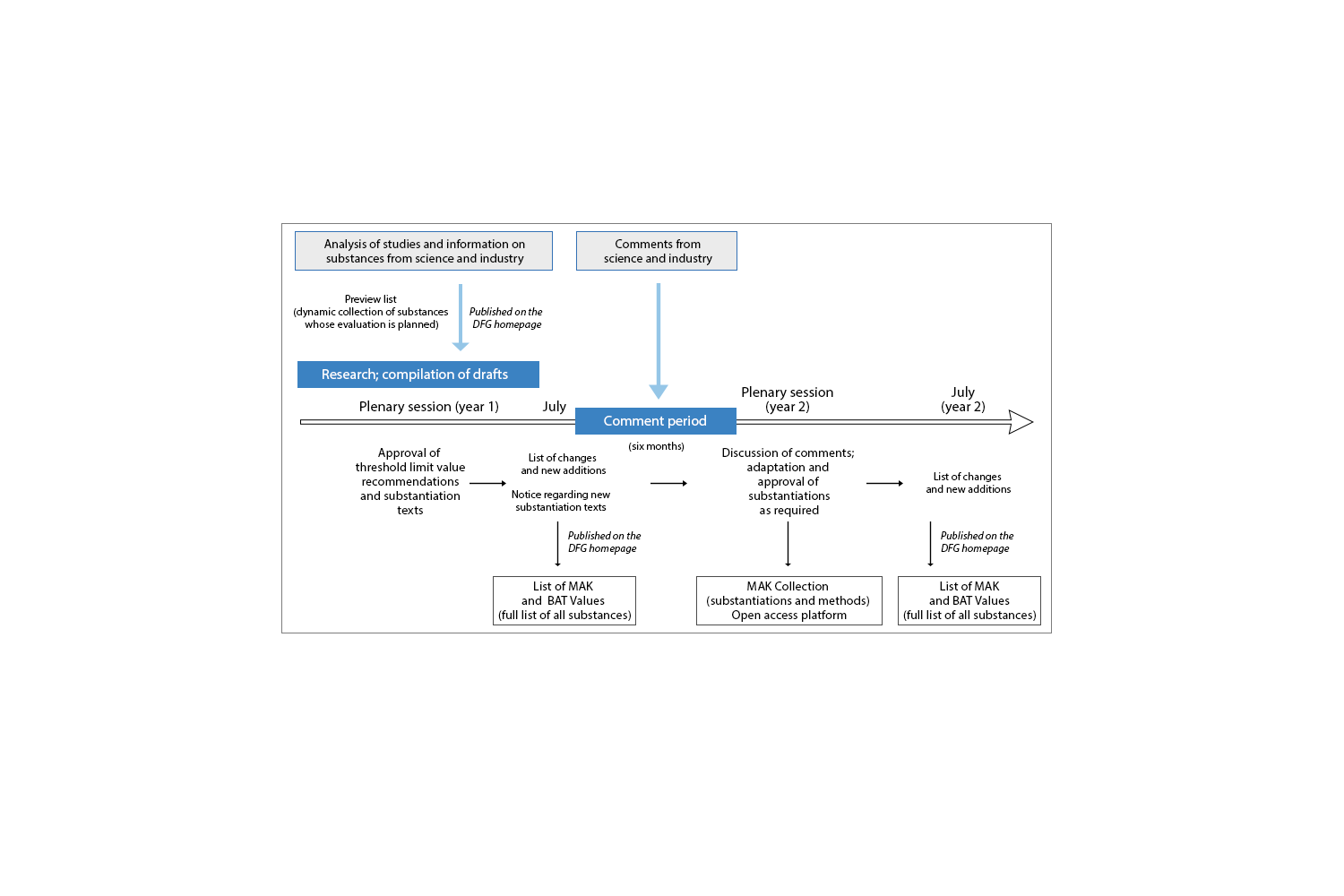How the Commission operates
The Commission is interdisciplinary. Expertise and practical experience are required in toxicology, pathology, various clinical fields, occupational medicine, epidemiology and chemistry. Despite the Commission’s extensive competence, an essential element in terms of the quality of its work is the exchange of information with as broad a public as possible.
One way of supporting the Commission’s work is to share information and practical observations relating to a substance or studies that the Commission has not yet taken into consideration. To make this easier, a preview list is published (see below) which shows the substances on which research has been started.
Threshold limit value recommendations and the relevant substantiations are formally approved at the plenary session of the Commission, which takes place in the spring. A list of changes and new additions (see the latest issue below) is published in July each year as part of the annual List of MAK and BAT Values. This is followed by a six-month comment period during which critical suggestions, questions or ambiguities from the public can be passed on to the Commission. The comments are discussed and responded to, and classifications or substantiations are adapted and revised as necessary. Only once this process is complete are the results formally approved and posted on the open-access platform – the so-called MAK Collection. If new findings or studies emerge, however, the discussion of a substance can be started again at any time. The classifications are derived from a detailed description of the categorisation and nomenclature, which can be consulted in the List of MAK and BAT Values or in the MAK Collection.
In addition to the classification of substances, the Commission also describes measuring methods and publishes them in the MAK Collection, thereby ensuring that it is possible to comply with threshold limit values. The measurement methods are tested and confirmed by at least one independent laboratories prior to publication.
The Commission is essentially free to identify issues and set priorities. However, suggestions from practice or proposals for substance or method analysis can be taken up at any time.
